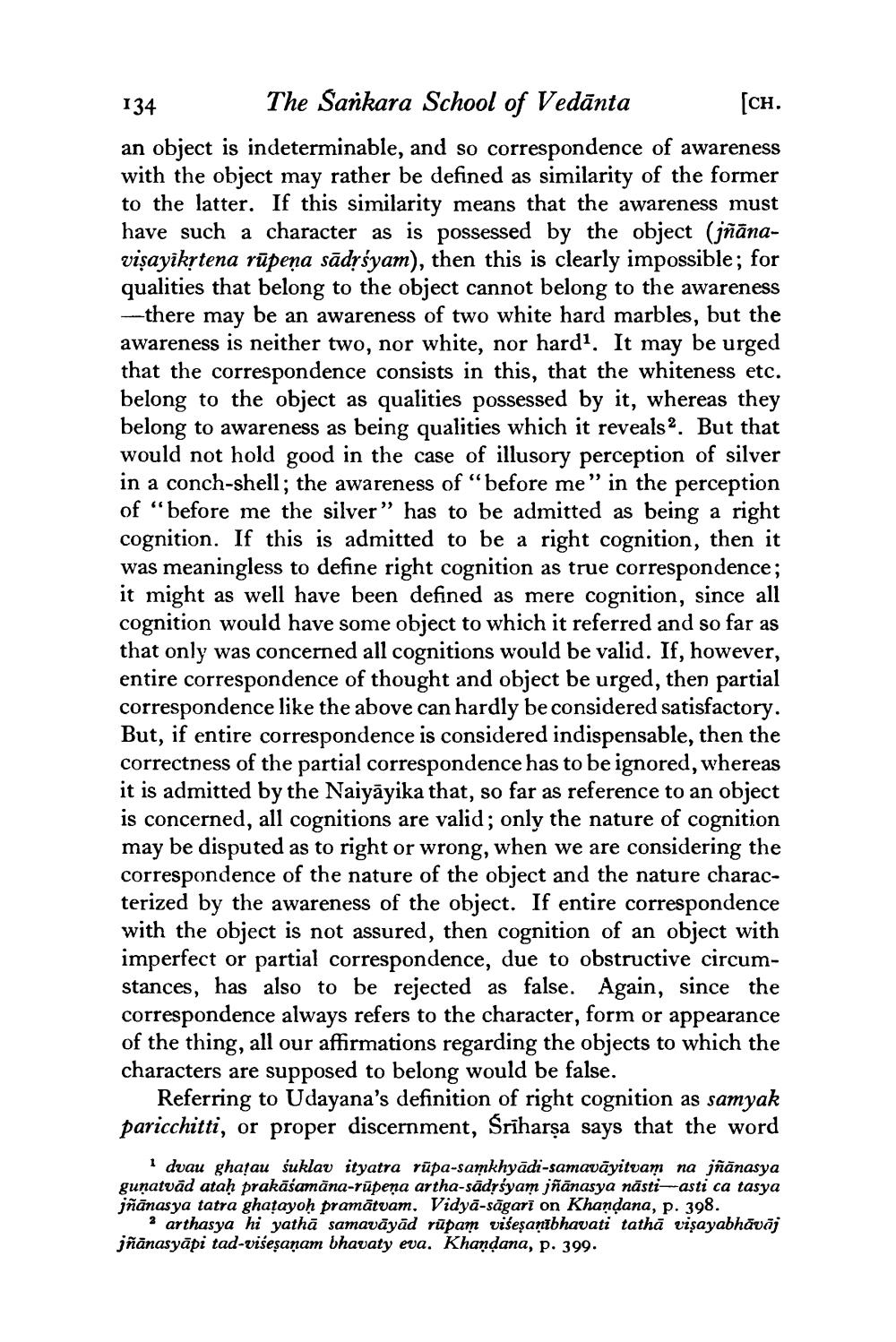________________
134 The Sankara School of Vedānta
[CH. an object is indeterminable, and so correspondence of awareness with the object may rather be defined as similarity of the former to the latter. If this similarity means that the awareness must have such a character as is possessed by the object (jñānavişayikştena rūpeņa sādyśyam), then this is clearly impossible; for qualities that belong to the object cannot belong to the awareness -there may be an awareness of two white hard marbles, but the awareness is neither two, nor white, nor hardt. It may be urged that the correspondence consists in this, that the whiteness etc. belong to the object as qualities possessed by it, whereas they belong to awareness as being qualities which it reveals. But that would not hold good in the case of illusory perception of silver in a conch-shell; the awareness of “before me” in the perception of “before me the silver” has to be admitted as being a right cognition. If this is admitted to be a right cognition, then it was meaningless to define right cognition as true correspondence; it might as well have been defined as mere cognition, since all cognition would have some object to which it referred and so far as that only was concerned all cognitions would be valid. If, however, entire correspondence of thought and object be urged, then partial correspondence like the above can hardly be considered satisfactory. But, if entire correspondence is considered indispensable, then the correctness of the partial correspondence has to be ignored, whereas it is admitted by the Naiyāyika that, so far as reference to an object is concerned, all cognitions are valid; only the nature of cognition may be disputed as to right or wrong, when we are considering the correspondence of the nature of the object and the nature characterized by the awareness of the object. If entire correspondence with the object is not assured, then cognition of an object with imperfect or partial correspondence, due to obstructive circumstances, has also to be rejected as false. Again, since the correspondence always refers to the character, form or appearance of the thing, all our affirmations regarding the objects to which the characters are supposed to belong would be false.
Referring to Udayana's definition of right cognition as samyak paricchitti, or proper discernment, Sriharsa says that the word
dvau ghatau suklav ityatra rūpa-samkhyādi-samavāyitvam na jñānasya gunatvād ataḥ prakāśamāna-rūpena artha-sādrśyam jñānasya nāsti-asti ca tasya jñānas ya tatra ghatayoh pramātvam. Vidyā-sāgarī on Khandana, p. 398.
arthasya hi yathā samavāyād rūpam višeşaņībhavati tathā visayabhāvāj jñānasyāpi tad-visesaņam bhavaty eva. Khandana, p. 399.




